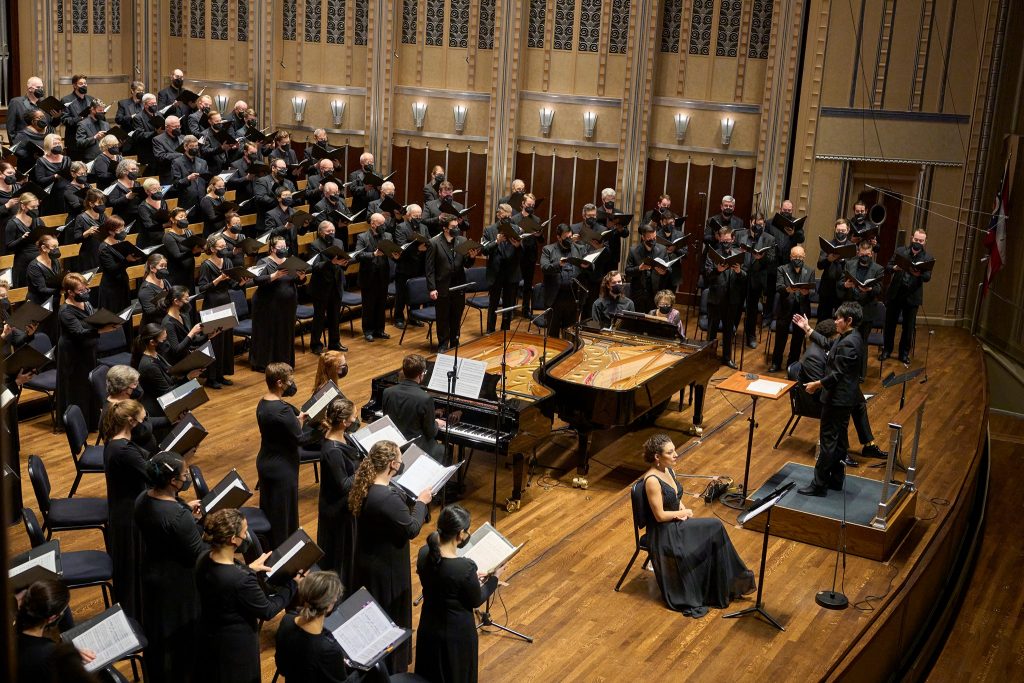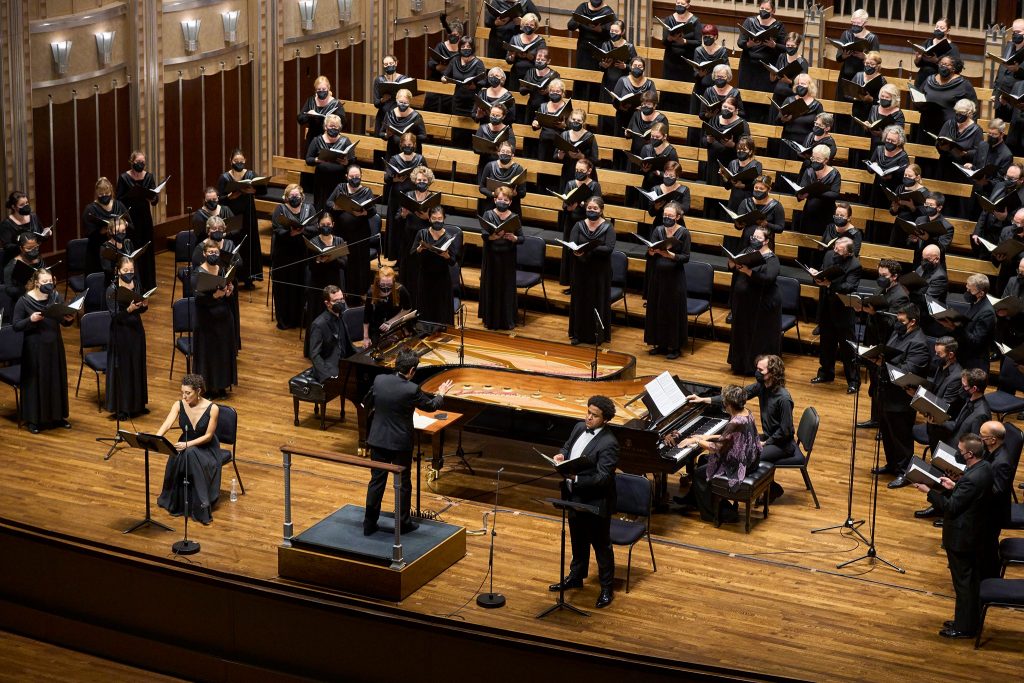by Daniel Hathaway

Had the Chorus been missed during its many months of silence? You bet it had. A thunderous welcome greeted the 120-some singers as they smartly filed onstage, to be matched at the other end of the evening by a warm and lengthy ovation for a job well done.
Unlike the famous Requiems by Mozart, Verdi, and Fauré, this non-liturgical and non-operatic work by Brahms is more of a humanistic cantata, bringing scriptural messages of comfort and consolation to those who mourn, while fully acknowledging the transitory nature of existence.
All flesh is as grass, and all the glory of man as the flower of grass.
The grass withers, and the flower thereof fadeth away.
Wong shaped a sensitive, yet powerful performance with impressive dynamic contrasts. While the Chorus’ opening words were barely audible but exquisitely supported (Selig sind, die da Leid tragen), the fugue subject that announces the return of the redeemed (Die Erlöseten des Herrn) was strong and confident. Drawing lovely, blended, and vibratoless tone from her singers, Wong made you forget that face masks might be making it difficult to enunciate and project.

Warner and Overly gave the singers warm, colorful support, playing the two-piano version that Brahms himself created — not just for rehearsal purposes, but for use in a concert performance. The wind section or Harmonie that gives much of Brahms’ orchestral music its special character went missing in Thursday evening’s performance (most noticeably in Wie lieblich sind deine Wohnungen), but the piano textures also allowed choral nuances to come across more clearly.

Photos by Roger Mastroianni courtesy of The Cleveland Orchestra.
Published on ClevelandClassical.com November 10, 2021.
Click here for a printable copy of this article



